Application of Synthesized Metal Organic Frameworks of Silver Benzene-1, 4-Dicarboxylate on Crude Oil Spill
DOI: 10.23977/chepe.2023.010101 | Downloads: 32 | Views: 3046
Author(s)
Orodu Victor Enearepuadoh 1, Abasi Cyprian Yameso 1, Dikio Ezekiel Dixon 1
Affiliation(s)
1 Chemical Sciences Department, Faculty of Science, Niger Delta University, Wilberforce Island, Bayelsa State, P.M.B 071, Nigeria
Corresponding Author
Orodu Victor EnearepuadohABSTRACT
This research synthesized, characterized, and applied the metal organic framework of silver benzene 1, 4-dicaboxylate for crude oil adsorption on water, which was simulated. Silver-metal organic frameworks (Ag-MOFs) were synthesized by reacting hydrated silver nitrate, AgNO3.6H2O, with 1, 4-benzenedicarboxylic acid (BDA) in N, N-dimethylformamide as a solvent. Solvothermal method was utilized for the process. The MOFs obtained were studied by Fourier transform infrared spectroscopy (FTIR), scanning electron microscopy (SEM), and energy dispersive x-ray spectroscopy (EDX). The adsorbent surface had large pores, and SEM micrographs revealed a mixture of particles with tetrahedral, flat, or plate-like shapes. Ag, C, and O, had an elemental composition of 50.9%, 29.6%, and 19.5%, according to EDX respectively. An adsorption research was done using 1 mL, 2 mL, 3 mL, and 4 mL of crude oil at adsorbent (Ag-MOF) doses of 0.2 g, 0.4 g, 0.6 g, 0.8 g, and 1 g for the adsorption of the crude oil from 50 mL of distilled water. The data obtained revealed that 0.2 g adsorbed 0.7 mL, 0.4 g adsorbed 0.8 mL, 0.6 g adsorbed 0.9 mL, and 0.8 g and 1.0 g of Ag-MOF adsorbed 1 mL. 1g of Ag-MOF applied to different volumes of the crude oil, showed an adsorption of 100% of the 2 mL, 2.9 mL (96.67%) of 3 mL, and 3.7 mL (92.5%) of 4 mL. The result of the effect of pH, showed an excellent adsorption at the pH used. Composites with clay and charcoal were used for the adsorption of the crude oil. The composite with clay was good, but not as good as charcoal for adsorption of crude oil. These results imply that an optimized quantity of Ag-MOF can be utilized in crude oil spill remediation in our environment.
KEYWORDS
Synthesis; Crude oil; Spillage; Remediation; CompositesCITE THIS PAPER
Orodu Victor Enearepuadoh, Abasi Cyprian Yameso, Dikio Ezekiel Dixon, Application of Synthesized Metal Organic Frameworks of Silver Benzene-1, 4-Dicarboxylate on Crude Oil Spill. Chemical Process Equipment (2023) Vol. 1: 1-12. DOI: http://dx.doi.org/10.23977/chepe.2023.010101.
REFERENCES
[1] Lopez J. (2018). Isoreticular two-dimensional magnetic coordination polymers prepared through presynthetic ligand functionalization. Nat. Chem, (10), 1001-1007.
[2] Zhou H. C., Kitagawa S. (2014). Metal –organic frameworks (MOFs). Chem. Soc. Rev, (43), 5415-5418.
[3] Talin A. A. (2014).Tunable electrical conductivity in metal-organic framework tin-film services. Science, (343), 66-69.
[4] Degayner J. A., Jeon I. R., Sun L., Dinca N., Harris T. D. (2017). 2D conductive iron-quinoide magnet ordering up to Tc 105K via heterogenous redox chemistry. J. An. Chem. Soc, 139, 4175-4184.
[5] Darago L. E., Aubre M. L., Yu C. J., Gonzalez M. I. and Long J. R. (2015). Electronic conductivity, ferri magnetic ordering, and reductive insertion mediated by organic mixed-valence in a ferric semiquinone metal. Organic-framework. J. Am. Chem. Soc, (137), 15703-15711.
[6] Dong R. (2018). High-mobility band-like charge transport in a semiconducting twodimensional metal-organic framework. Nat. mater, (17), 1027-1032.
[7] Kambe T. (2013). Pi-conjugated nickel bis (dithiolene) complex nanosheet. J. Am. Chem. Soc. (135), 2462-2465.
[8] Lingjuan S. (2012). Synthesis, characterization and application of metal organic frameworks, 1-3.
[9] Ferey G., Draznieks C.M., Serre C., Millange F. (2005). Crystallized frameworks with giant pores: Acc. Chem. Res, (38), 217-225
[10] Mueller U., Schubert M., Teich F., Puetter H., Schierle-A. K., Pastre J. (2006). Metal–organic frameworks -Prospective industrial applications, J. Mater. Chem. (16), 626–636.
[11] Gallo M., Glossman M. D. (2009). Fuel gas storage and separations by metal-organic frameworks: Simulated adsorption isotherms for H2 and CH4 and their equimolar mixture, J. Phys. Chem. C. (113), 6634–6642.
[12] Wu C.D., Hu A., Zhang L., Lin W. (2005), A homochiral porous metal-organic framework for highly enantioselective heterogeneous asymmetric catalysis, J. Am. Chem. Soc. (127), 8940–8941
[13] Chen B., Yang Y., Zapata F., Lin G., Qian G., Lobkovsky E.B. (2007).Luminescent open metal sites within a metal-organic framework for sensing small molecules, Adv. Mater. (19), 1693–1696.
[14] Rowsell J.L.C., Spencer E.C., Eckert J., Howard J.A.K., Yaghi O.M. (2005). Gas adsorption sites in a large-pore metal-organic framework, Science (309), 1350–1354.
[15] Philip M. Stanley, Christopher Thomas, Erling Thyrhaug, Alexander Urstoeger, Michael Schuster, Jürgen Hauer, Bernhard Rieger, Julien Warnan, Roland A. Fischer. (2021) Entrapped Molecular Photocatalyst and Photosensitizer in Metal–Organic Framework Nanoreactors for Enhanced Solar CO2 Reduction. ACSCatalysis, 11 (2), 871-882. https:// doi.org/10.1021/acscatal.0c04673
[16] Yamei Sun, Ziqian Xue, Qinglin Liu, Yaling Jia, Yinle Li, Kang Liu, Yiyang Lin, Min Liu, Guangqin Li & Cheng-Yong Su(2021), Modulating electronic structure of metal-organic frameworks by introducing atomically dispersed Ru for efficient hydrogen evolution. NatureCommunications 12:1369
[17] Yaghi O. M., Eubank J. F., Forster P. (2009). Chem. Soc. Rev, (38), 1213-1214
[18] Brandon R. Barnett, Surya T. Parker, Maria V. Paley, Miguel I. Gonzalez, Naomi Biggins Julia Oktawiec and Jeffrey R. Long. (2019,) Thermodynamic Separation of 1-Butene from 2-Butene in Metal–Organic Frameworks with Open Metal Sites J. Am. Chem. Soc., 141, 45, 18325–18333
[19] Giliopoulos D., Zamboulis A., Giannakoudakis D., Bikiaris D., Triantafyllidis K. (2020) Polymer/Metal Organic Framework (MOF) Nanocomposites for Biomedical Applications. Molecules, 25, 185-189. https://doi.org/10.3390/ molecules25010185
[20] Andriotou D., Diamantis S.A., Zacharia A., Itskos G., Panagiotou N., Tasiopoulos A.J., Lazarides T. (2020) Dual Emission in a Ligand and Metal Co-Doped Lanthanide-Organic Framework: Color Tuning and Temperature Dependent Luminescence. Molecules, 25,523. https://doi.org/10.3390/molecules25030523
[21] James F.Claire, Marina Solomos, Jungkil Kim, Gaoqiang Wang, Maxime A. Siegler, Michael F. Crommie & Thomas J. Kempa (2020), Structural and electronic switching of a single crystal 2D metal-organic framework prepared by chemical vapor deposition. Nature Communications, 11, 5524-5526
[22] Cameron I, Carpenter-Warren, Alexandra M.Z, Slawin (2021), One pot,three dimensionionalities:1D, 2D and 3D Zinc Coordination polymers with both N- and O- linkers produced in same reaction. Elsevier, Journal of Solid State Chemistry, 293, 121717.
[23] Senda Ben Jmaa and Amjad Kallel (2019), Assessment of Performance of Posidona oceanica (L.) as Biosorbent for Crude Oil-Spill Cleanup in Seawater. Hindawi BioMed Research International, Article ID 6029654, 9 pages https://doi.org/10.1155/2019/6029654
[24] Mircea D., and Long J. R., Angew and Chemie T. E. (2008). International Ed, 47(36), 6766-6779.
[25] Andrea C., Sudik P., Adrien C., Wong-Foy A. G., Keeffe M. O., and Yaghi O. M. Angew (2006). Chem. Int. Ed., (45), 2528-2533.
[26] Egorova E., Revina A., (2000). Colloids Surf. Physicochem. Eng. Aspects, (168), 87.
[27] Kholoud M. M., Abou E., Ala E, Abdulrhman A., Reda A. A. (2010). Synthesis and applications of silver nanoparticles. Arabian Journal of Chemistry, (3), 135–140.
[28] Adedibu C., Tella Isaac Y., A. (2012).) The synthesis and application of metal organic frameworks materials: a review. Acta Chim. Pharm. Indica, 2(2), 75-81.
[29] Hussein R. A., Jin S., Ha-Ming Ang & Shaobin Wang (2013), Amino-functionalized Zr-MOF nanoparticles for adsorption of CO2 and CH4, International Journal of Smart and Nano Materials, 4:1, 72-82.
[30] Hiroyasu F., Kyle E. Cordova, 1, 2 Michael O' Keeffe Omar M. Yaghi. (2013). The Chemistry and Applications of Metal-Organic Frameworks. Science, 34.1
[31] JoséMaría R., Susana, R., Cherif B., Youssef Alejandro Z. (2016). Highly Efficient Adsorption of Aqueous Pb(II) with Mesoporous Metal-Organic Framework-5: An Equilibrium and Kinetic Study. Journal of Nanomaterials, 1-10
[32] Xili Cui, Zheng Niu, Chuan Shan, Lifeng Yang, Jianbo Hu, Qingju Wang, Pui Ching Lan, Yijian Li, Lukasz Wojtas, Shengqian Ma & Huabin Xing.,(2020), Efficient separation of xylene isomers by a guest-responsive metal–organic framework with rotational anionic sites. Nature Communications 11: 5456
[33] Dmytro Antypov, Aleksander Shkurenko, Prashant M. Bhatt, Youssef Belmabkhout, Karim Adil, Amandine Cadiau, Mikhail Suyetin, Mohamed Eddaoudi, Matthew J.Rosseinsky & Matthew S. (2020), Differential guest location by host dynamics enhances propylene/propane separation in a metal-organic framework. NatureCommunications 11: 6099
[34] James Mitchell crow, (2012)-MOFs smashes gas storage ceiling. Royal Society of Chemistry
[35] Orodu Victor Enearepuadoh and Dikio Ezekiel Dixon., (2021), Synthesis, Characterization and Adsorption Study of Metal Organic Framework of Copper (II) benzene-1, 4dicarboxylate (Cu-MOF) on Crude oil. Progress in Materials Chemistry and Physics 2: 1-14.
| Downloads: | 32 |
|---|---|
| Visits: | 3046 |
Sponsors, Associates, and Links
-
Cybernetics and Mechatronics
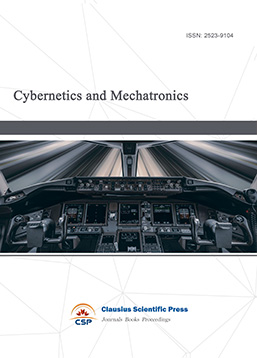
-
Journal of Engineering Mechanics and Machinery

-
Digital Manufacturing and Process Management
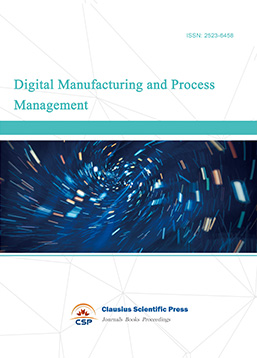
-
Ultra-Precision Machining Process

-
Journal of Robotics and Biomimetics
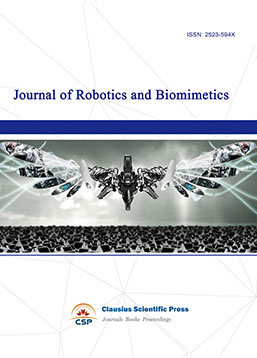
-
Prognostics, Diagnostics and Health Management

-
Micro-Electro-Mechanical Systems

-
Journal of Precision Instrument and Machinery
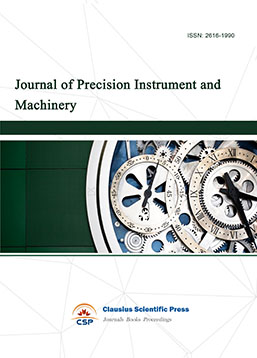
-
Engineering and Solid Mechanics

-
Fracture and Damage Mechanics
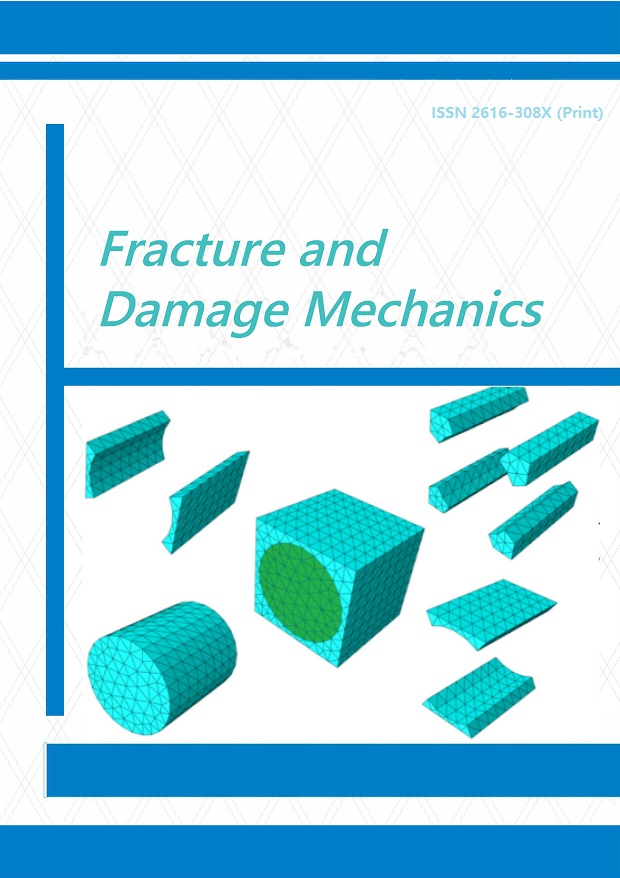
-
Frontiers in Tribology

-
Fluid and Power Machinery

-
Journal of Assembly and Manufacturing
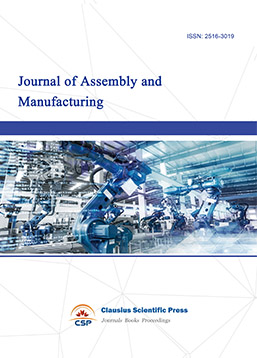
-
Mechanical Vibration and Noise


 Download as PDF
Download as PDF